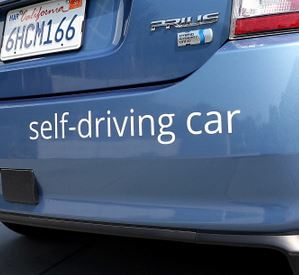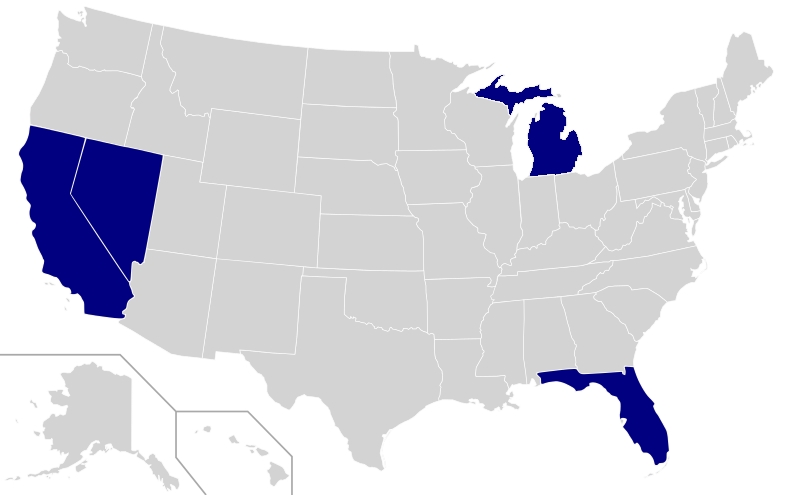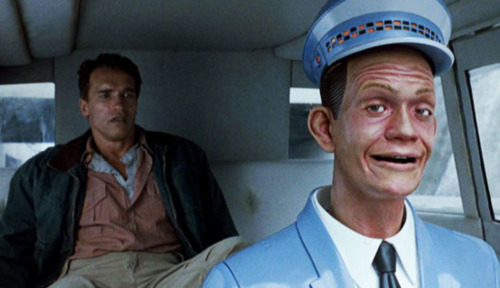
When automobiles became popular in the early 20th century, people didn’t carry swords anymore, but Britain kept the tradition alive and required drivers to drive on the left-hand side of the road while they sat in the right-hand side of the car. Now, 714 years after Pope Boniface revolutionized British highways, the country is poised yet again to change the landscape of how Britons travel.
British authorities announced yesterday that autonomous vehicles will be on the road by the year 2015. That’s right, driverless cars will be operating themselves on the left-hand side of the road in three British cities as soon as January 1st — possibly sooner.
“We are already beginning to see this in the United States. Whole fleets can be operated through satellite controls to operate more efficiently.”
– Dr. John Vincent Cable, Secretary of State for Business, Innovation and Skills
According to Dr. Cable, automatic parking and braking is already being integrated into vehicles and the next logical step is to control the roadways altogether. He believes that a network of satellites in charge of the roads will not only lead to increased safety, but also make Britain the world leader in this field. He also thinks that a driverless car network makes more sense than improving the public transportation system. And he may be right.
In a 2012 survey conducted by the Royal Society for the Prevention of Accidents, they found that Britain is home to some of the safest drivers in the world. Despite massive increases in traffic and population, Britain has somehow managed to decrease their yearly traffic death toll to 1,754 – down from 5,500 in the mid-1980s. A fleet of driverless vehicles could reduce these numbers even more, and if it proves to be successful, replacing antiquated public transportation systems with autonomous vehicles seems like a logical step.
Here in the United States, where Google began road-testing self-driving vehicles in 2012, over 33,000 people died on the road that same year. And while there’s no set date as to when driverless cars will be available to the masses, the country is constantly investing in its public transportation infrastructure because it improves the economy, reduces traffic and saves money. But should our focus change from subways, trains and buses to driverless cars?
“Last year, people took 10.7 billion trips on public transportation. As the highest annual ridership number since 1956, Americans in growing numbers want to have more public transit services in their communities.”
– Peter Varga, APTA Chair and CEO of The Rapid in Grand Rapids, Michigan

These states already allow self-driving vehicles on the road and others will eventually follow.
Public transportation is a very useful service if you’re able to take advantage of it. But many people are forced to drive because they either don’t have public transportation service near them, or they don’t have the time to be on public transportation’s schedule. If we replaced buses with fleets of self-driving vehicles, public transportation could become feasible for anyone that wanted to use it.
As someone who had to rely on public transportation for several years, I know firsthand how inconvenient it can be at times. I’ve waited in the rain for hours, been late to work, and had my belongings stolen. If we had a fleet of driverless cars to replace the traditional transportation model, none of those things would have happened. I may not even have to own a car today.
What I did enjoy about public transportation far outweighed all the cons. I was able to read two to three books a week, not deal with road-raging drivers during rush hour, and got a head start on my work for the day. Whatever your reasons may be to take public transportation, self-driving vehicles would allow you to still take advantage of that time to do something productive.
Replacing public transportation with autonomous vehicles may seem like a scenario from a science-fiction movie, and it is, but it also may happen in the not-so-distant future. The statistics prove that people would benefit from improved public transportation services, and countries like Britain and the USA are adamant about getting driverless vehicles on the road. Integrating self-driving vehicles into the public transportation system would address both of these concerns.
Companies like Lyft and Uber have been able to thrive because they provide a viable alternative to a somewhat flawed taxi service. In a similar fashion, self-driving vehicles could be the alternative to all the flawed aspects of public transportation. We may not all be able to afford a driverless car, but most of us are capable of buying a bus pass. And who knows, maybe with all that extra time and money we’ll save by not driving, we can take sword-fighting lessons in case we come across some unfriendly strangers on our travels.

Science-fiction is now a reality.
How do you think self-driving cars will shape our future? Do you think we should use them as public transportation?
